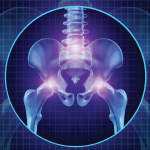Tough Love for Kids with JHS
Engaging the patient is equally important when working with hypermobile children, noted Susan M. Maillard, MSc, a clinical specialist physiotherapist in pediatric rheumatology at Great Ormond Street Children’s Hospital in London. “Our philosophy at Great Ormond Street Hospital is to increase children’s function despite their pain,” she said. To overcome children’s resistance to exercise, they’re told by the treatment team: “You’re double-jointed, so you need double the muscle strength to protect your joints.”
Children with hypermobility syndrome share common complaints at presentation, such as muscle weakness—particularly of the hip abductors and hip extensors—poor central stability, and poor grip. Underscoring Dr. Grahame’s contention about the under-recognition of the syndrome’s complex features, Maillard added that over 40% of the children also report trouble sleeping; 55% are fidgety, resulting in problems at school; and 41% report problems with constipation.


